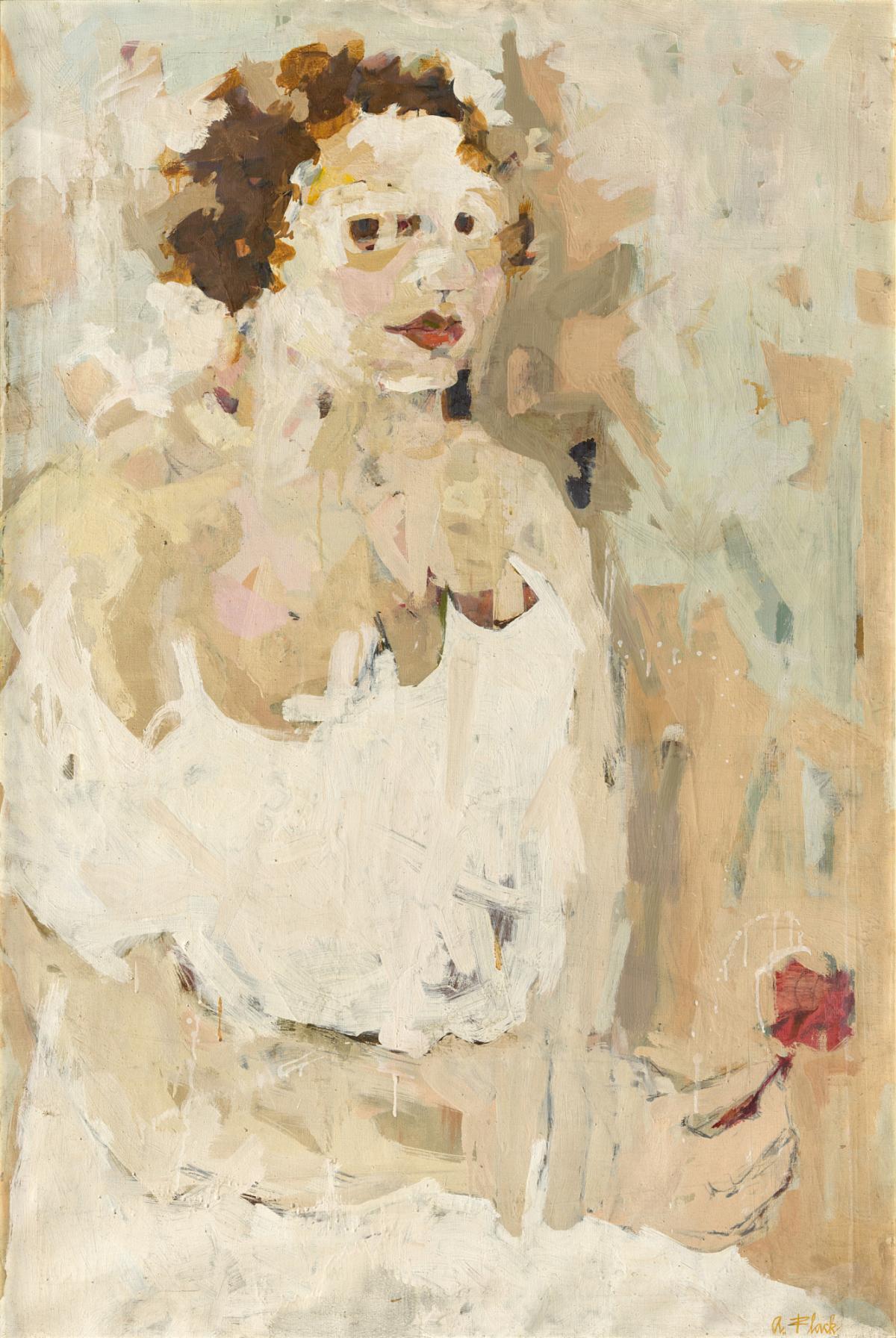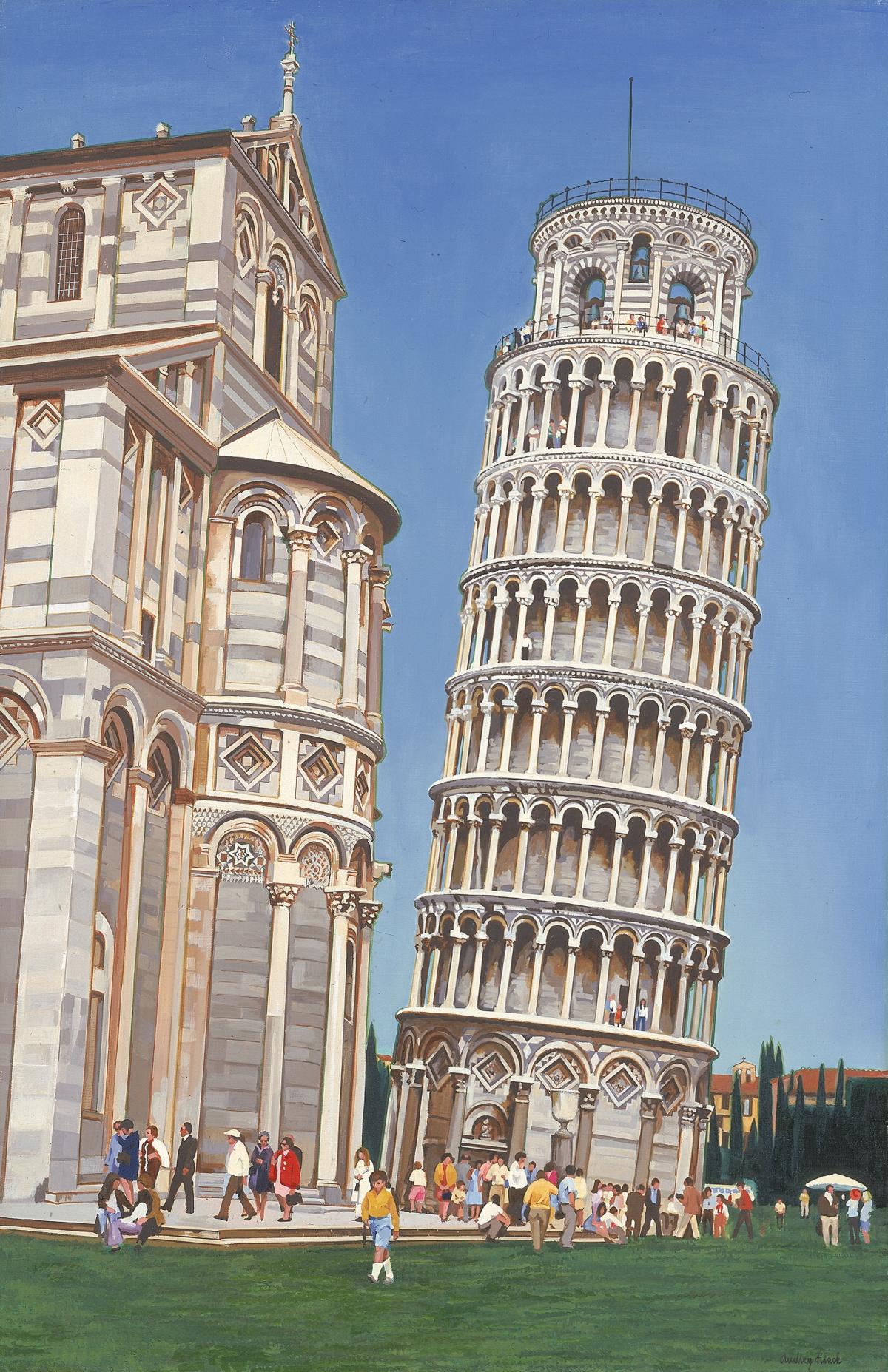Renowned artist Audrey Flack drew upon personal, feminist, social, and historical subject matter across various mediums and styles—including abstract and figurative painting, photorealism, and sculpture.
From her early days blending abstract and figurative elements in painting to her groundbreaking use of photorealism starting in the 1960s, Flack consistently challenged artistic norms. Her transition to sculpture in the 1980s, creating images of powerful goddesses and women from mythology, further underscored her commitment to portraying women with strength and agency, diverging from traditional representations of passive femininity. Throughout her career, Flack’s work delved into the fleeting nature of life and the enduring power of art to transcend time. Audrey Flack’s legacy resonates not only through her rich body of work but also in her unwavering dedication to reshaping artistic narratives and perceptions of women.
With a career that spanned seven decades, Audrey Flack recalls having a fascination with art from a very young age, visiting museums near her home in the Washington Heights neighborhood of New York City, and constantly drawing and creating.” As a young person she considered art a calling, the only thing that made sense to her, explaining, “...when I was a young artist, you didn’t think of making money. That was vulgar. You were going to make great art.” Though the art world was unfamiliar to Flack and her parents, they encouraged her to pursue her dreams, which led her from the High School of Music & Art and The Cooper Union for the Advancement of Science and Art in New York City to Yale University in 1952 and extended studies in anatomy and art history. During the 1950s, Flack’s early abstract paintings began to incorporate figurative elements, such as in Lady with a Pink.
Young motherhood and a changing world influenced a shift in style for Flack, and she started painting from photojournalistic sources and later from her own photographs. In the 1970s, Flack was part of a cohort of predominantly white male Photorealists—artists who used photographs as the source for paintings rendered in a hyper-detailed style. Her first subjects were architecture, painting scenes she had captured from her travels through Europe, such as the Tower of Pisa.
Whereas many of her male peers using photorealism painted seemingly everyday scenes, like cityscapes or cars, Flack’s luminous large-scale works often encompassed more symbolically charged feminine and feminist subjects, such as Queen, in SAAM’s permanent collection, and Spitfire, in the collection of the National Air and Space Museum. In Spitfire, the feminine-coded pearls that wind through the usually masculine-coded airplanes and other “toys for boys” represent “women’s interest in flight and that women can fly too.” With Queen, Flack has said that she made this painting “for all women, particularly women gamblers.” This is a reference to her mother, whose portrait appears, alongside the artist’s, in the open locket just below the queen of hearts playing card.
After nearly thirty years of sculpting beginning in the 1980s, Flack returned to large-scale painting in the 2010s. In her “Post Pop Baroque” paintings, she continued her dialogues with the past, present, and future by combining elements of Renaissance and Baroque art history with contemporary references and religious imagery.
Audrey Flack died in June 2024 at the age of 93. SAAM’s “Meet the Artist” video, which was filmed in early 2023, is a fitting tribute to Flack and the remarkable breadth of her career. Go into her studio for an engaging personal interview on her body of work and the uplifting and nourishing nature of art.























